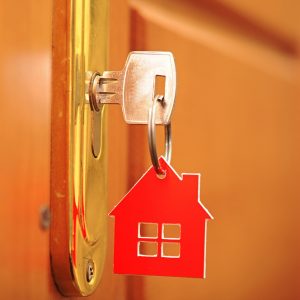
The government’s EPLS for 2020/21 found that 42 per cent of 9,000 landlords surveyed went into the market because they saw property as a solid investment while 40 per cent considered it as part of their retirement financial planning to supplement their pension.
Over a third, 35 per cent, became landlords having bought their first property with the intention to live in it themselves.
Buy-to-let landlords were more likely to view their role as a landlord as a long-term pension investment with 58 per cent saying so, compared to those with other kinds of loans or those with no borrowing debts at 44 per cent and 51 per cent respectively. Additionally, seven per cent of buy-to-let landlords see it as a business compared to three per cent of those with other kinds of loans and two per cent with no borrowing.
Some 34 per cent of buy-to-let landlords reported that they see their role as an investment in capital growth, compared to a quarter with those borrowing other kinds of loans and 19 per cent of those with no borrowing debts.
However, the investment doesn’t come without risk, according to Helen Morrissey, senior pensions and retirement analyst at Hargreaves Lansdown.
She said elderly investors should not be overly reliant on property as a retirement plan in the case of a market downturn, and that being a landlord is rife with costs and legal stressors particularly when it comes to selling.
“This could be especially difficult if you needed to sell quickly to fund long-term care for instance,” she added.
Landlords can also find themselves hit with stamp duty, legal fees and ongoing maintenance costs stacking up over time, which grows exponentially the more properties a landlord has. Rent is also taxed, as are any profits when it comes to selling up.
Morrissey added: “If you plan to be a landlord into your retirement, then you will need to factor in the work being a landlord entails and if you aren’t able to do it then you will need to pay someone who can. It is important to take a long-term view of these costs when deciding to take the leap into becoming a landlord.”
Growing privatisation
The number of households in the private rented sector rose by 45 per cent between 2008/09 and 2020/21, from 3.1 million to 4.4 million households. It is now the second largest tenure in England, comprising 19 per cent of all households, having grown five per cent since 2008/09, when it was smaller than the social rented sector.
Landlords with buy-to-let mortgages were more likely to have multiple properties than those with other types of loans, or no loan at all. One in three, 33 per cent, of landlords with a buy-to-let mortgage owned one property, with the remaining two thirds, 67 per cent, owning two or more.
The use of alternative loans is growing too. Nearly two thirds, 62 per cent, of landlords with non-BTL loans owned one property, up 11 per cent from 2018.
Over a third, 43 per cent, of landlords own one rental property, accounting for 20 per cent of tenancies, while 18 per cent own five or more, taking up 48 per cent of tenancies.
The gender divide shows that 44 per cent of landlords are women. Women are also more likely to own just one property, 55 per cent, while male landlords tend to have a bigger portfolio.
The stress of tenants and rent
The survey found that things can get complicated when it comes to dealing with tenants, which have an increasingly high turnover for private landlords.
There are around 3.9 million live deposits registered with government-backed tenancy deposit protection (TDP) schemes in England. Of an estimated 438,000 registrants comprising landlords and agents, around 408,000 were landlords who had registered the deposits themselves. However, only 62 per cent returned the full deposit at the end of their last tenancy.
Landlords with one property most commonly had either one tenant in arrears, at 67 per cent. As a result of the pandemic, 18 per cent of landlords negotiated a new arrangement, of whom 49 per cent reduced the rent, and 31 per cent had a deferral arrangement.
Evictions are getting harder
The government has announced plans to reform the private rented sector, including the removal of ‘no fault’ evictions under section 21 of the Housing and Planning Act.
While 67 per cent of evictions in the last year were no fault evictions, one in four landlords had to issue a section eight notice for breaching the terms of tenancy. One in 20 offered to pay the tenants to leave.
Families are also increasingly likely to rent, with 1.3 million families, or 30 per cent, including dependent children in 2020/21.
Nearly half of landlords, 45 per cent, increased the rent on new tenancies. Only 35 per cent kept the rent at the same level, and just eight per cent decreased the rent. For renewals of existing tenancies, 64 per cent of landlords kept the same rent, 26 per cent increased it, and four per cent decreased the rent on renewal.
The vast majority, 84 per cent, were unwilling to let to someone with a history of rent arrears. Meanwhile more than two fifths of landlords, 44 per cent, were unwilling to let to tenants on either housing support or universal credit.
Nearly half were unwilling to let to included students, 48 per cent, tenants with pets, 45 per cent, and 44 per cent were unwilling to let to tenants requiring adaptations to the property.
















